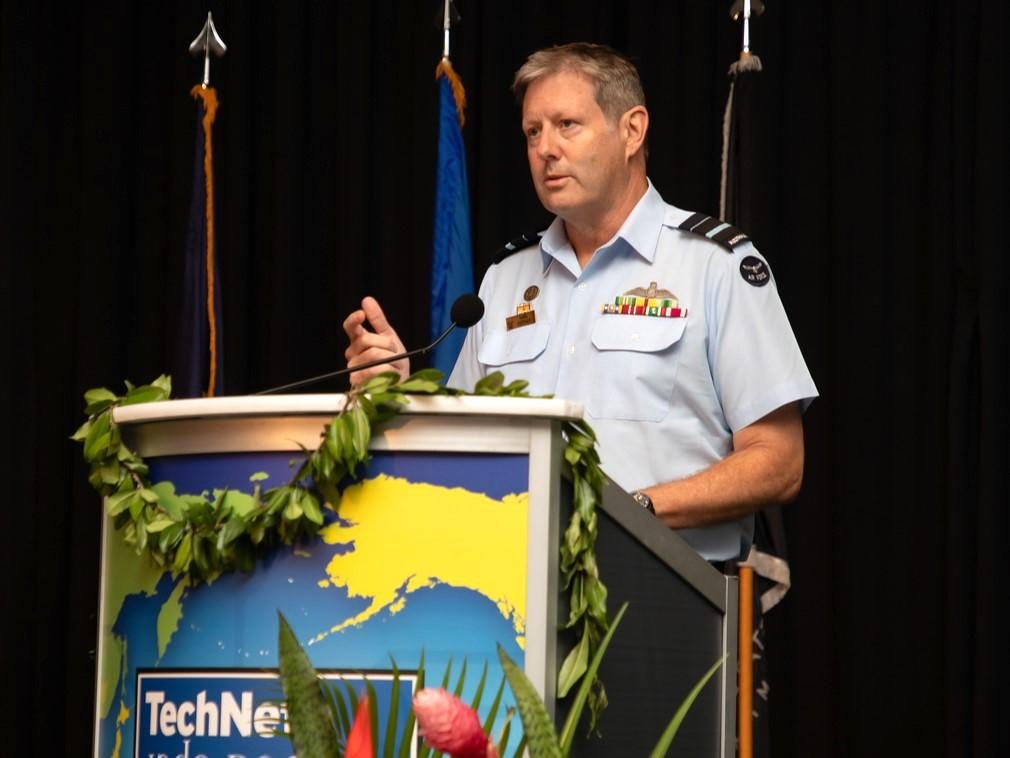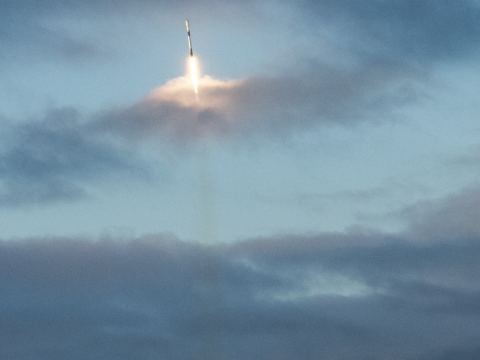Technological Advantage Will Keep Getting Smaller
As authoritarian regimes work to undermine the rules based on global order in a power competition, the United States and its allied partners must leverage technology and capability to stay ahead of the game.
“We’re seeing the [Chinese Communist Party] that has demonstrated an unwavering resolve for their hegemonic aspirations,” said Air Vice Marshall Carl Newman, RAAF, Australian deputy commander, U.S. Pacific Air Forces. “Their ambitions within the region to be a dominant player is a zero-sum game.”
In a pivotal era of a digitized world, adversarial threats on critical infrastructure within the Indo-Pacific region continue to rise.
“Since World War II, the West has arguably maintained technological advantage, a military superiority,” the Wednesday keynote speaker continued. However, the People’s Republic of China (PRC) has invested tens of billions of dollars to focus on AI development and integration. With projections for over 60 space launches, more than 200 spacecrafts, producing J20s, a stealth fighter, the PRC’s industrial base is ahead of schedule and making great strides in technological progress.
“So, how do we compete with that?” AVM Newman asked the audience at TechNet Indo-Pacific 2023 held in Honolulu, Hawaii, November 7-9. “How do we establish capability that projects strength against an adversary that can build capability so quickly?”
The deputy commander offered two options. First, the United States could continue pursuing current projects, such as the Third Offset Strategy and double down on capability efforts. Second, the nation, alongside coalition partners, could change the game.
“I have a view we need to do both,” he stated. “We need to both ameliorate short-term risk by doubling down on what we’re currently doing, by accelerating the modernization capability.”
The recently released Pacific Air Forces (PACAF) Strategy 2030, for example, discusses the need to enhance warfighters' advantage by increasing domain awareness, operating from dispersed locations and most effectively using capabilities. PACAF also prioritizes interoperability, AVM Newman explained, to ensure secure and consistent communication with allies and partners.
To change the game, however, a new model must make the existing model obsolete. “This has been done post World War II for numbers of decades; it was the First Offset Strategy.”
The strategy was put in place to help counter the Soviet Union and helped the West bring in technology that made conventional forces obsolete. Over time, the USSR caught up and eliminated the West’s military advantage, further creating the demand for a Second Offset Strategy.
“Strategy that lasted from the mid-70s through the late 80s, early 90s, where we leveraged technologies like GPS, precision-guided munitions, stealth platforms, that allowed us to penetrate complex, integrated air and missile defense systems and kinetically target very effectively and efficiently with the numbers of forces that we had,” AVM Newman explained. The strategy and advantage kept the West ahead for about a decade and a half.
We need to be constantly thinking about what's next.
Following the fall of the Soviet Union, the focus shifted to the Middle East. “We weren’t looking for the next military advantage against a key competitor,” AVM Newman stated, “and that allowed competitors like China to catch up.”
Taking advantage of the West’s distraction of conventional conflicts, adversaries overcame the Second Offset Strategy and overtook the playing field.
Today, the West is pursuing a Third Offset Strategy. “That strategy has been evolving, and I’m very confident the next strategy will provide us with the capability that will give us an offset advantage,” Newman stated.
Though modern capabilities like autonomy, artificial intelligence and joint command and control show promise, it is not long until the next offset strategy is needed.
“Each offset strategy's effect is trending to last far less than its last iteration,” he stated. As with any previous innovation, the development of current technologies is happening at a much quicker pace. “We need to be constantly thinking about what’s next,” the speaker noted.
Only with true collaboration between government/defense, academia and industry, can the United States, along with its allied partners, keep technological advantage.





Comments